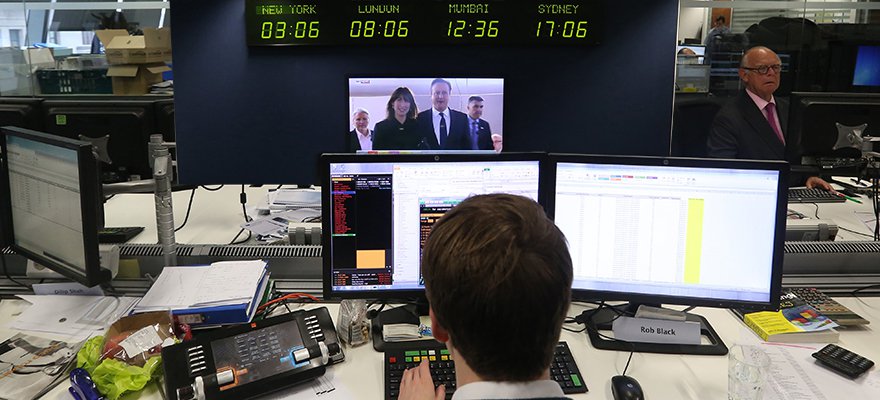All of us that have studied the latest user experience (UX) trends. We have also noted some concepts; the famous “mobile first”, the extreme “mobile only” and the gold phrase “keep it simple”. Dogmas of faith that look forward to standardize the user experience within a multi-device context where the differences in size, capabilities, OS design principles and features make that each device be a whole different planet, turning users into space tourists.
It’s easy to stick to these concepts if you take Google as an example, where the interface is minimalistic by essence and the interaction is reduced to 10 - 15 features. But, when we talk about Retail Banking or Investment Banking, with hundreds of features and data, how do we face the challenge of fitting within our customer’s pocket?
Mobile Banking UX has the challenge to simplify highly complex platforms, with multiple features, use cases and types of users, requiring us to be more creative, intelligent and to take advantage from the specifics of each device in a consistent manner, so we can give to our customers that “Google experience” when they are doing an investment, transferring money or checking their accounts.
At Finvox, our experience has led us to identify key points when developing a minimalistic financial experience. The ultimate goal is an experience that not only fits in the end user’s pocket, but to simplify, enhance and maximize the desktop platform, and leave enough “air” on the screen for the user to breath but contain essential product features.
Pillars of UX banking:
1) Identify the use cases: It does not make sense to categorize the features in alphabetical order, by product or origin. Analyze which of the features are the most used and discover which ones are commonly used along with others. Sort the platform in such a way that the user should not “walk through the whole supermarket just to buy diapers and baby powder”. Always keep in mind the Paretto Principle.
2) Automatic customization: Every user is different, not only with his habits but his potential risk and profitability for a bank. If one customer logs in three times per week and does not revise his bank statement since a year ago, what makes you think that today is the big day? Use this space to offer him an increase in his line of credit or any other product that makes sense to his “financial profile”.
The platforms should “memorize” the user’s historical behavior and the features he uses more frequently and put those in a leading role on the platform at the time you program algorithms to offer consumer credits, mortgages, insurances or other products depending on his past behaviors. Which is your user’s income? What about his expense level? And his patrimony? You have all this data; it’s time to stop offering mortgages to who clearly doesn’t have money for the initial fee.
3) Hide data: Your platform has a lot of data. Too much. Obviously you can’t remove it from your site because the user may need it, but keep them in your virtual basement and let the attractive blondes monopolize the showcase. You know what data is rarely used, it is time to create a tab at the bottom of the site where no one goes unless he is looking for something unusual and leave the rare elements in a rare place of your site. If you do your job well, your clients will feel that you know them better than anyone.
4) Do not replicate the web on the mobile platform. Not all features are mobile. Once you have identified the use cases, you can create different applications for each of them. This is a common and very hygienic practice that will help you to take advantage of that 4 or 5 inches size screen. Keep it Simple AND clean. That said, another recommendation is not to keep lots of apps because probably several of them will be irrelevant, making the download experience annoying for your customers by delivering too many (and bad) options, without mentioning the difficulty to keep the consistency through all those apps.
5) Integrate your application within the context of each device. Your customer is used to switch to landscape screen view just by rotating his smartphone. If he orders a new credit card sent to his domicile, identify him from his contacts app and ask to use these addresses so he doesn’t need to type it. If he is looking for a branch from his smartphone, let him get directions from Waze. Let him store receipts of electronic transfers directly on Dropbox, independent from which device he is using. All other apps are integrated with each other. Don’t be the exception.
6) Use relevant notifications: Banking and investing are important aspects in everyone’s lives. Several platforms struggle to find something important to notify their users and engage them. Banks and brokers face a different problem; to discover which financial processes are important for each customer. The answer will vary from client to client, but the answer in only one; Let users decide what they want to be notified about, by which channel and how frequently. Make a list of potentially important financial events (like income or expenses over a certain amount of money, substantial rise or fall in the price of a stock in your portfolio, etc.) and let the user customize the notification. There will be some customers that would want to receive an email once per day; others would like a push notification direct to their smartphones in real time.
7) Be consistent: Identify all the elements that shall be present on your platforms along all devices. Let them start a defined course of action on device 1 and finalize it on device 2, like scheduling a notification on a laptop and getting it on their smartphone. Plan the browsing experience to be similar on all devices in such a way that the learning curve for moving from one device to the other isn’t complex or time consuming.
8) Be smart: Use the data created by your new platforms to find new patterns. You already had your customers’ financial information but if one user wants to be notified in real time about the increase or decrease of specific share is a different profile from one that also has a portfolio but wants to receive a monthly e-mail. Train the sales executives to use this data in order to offer the right product to the right client at the right time.
In Finvox we have a mobile trading app in which investors can set up price alerts to be notified in real time. When setting up the alert, the investor indicates if at that price he would be buying or selling that stock. Once the alert is triggered, his executive receives the alert also, giving him the opportunity to reach the investor in order to offer him to buy or sell in case the investor hasn’t done this after a determined time.
9) Get adaptive: your bank has a graphic standards manual, with specifications about the corporate image of its Brand. Regarding to mobile operating systems, “you're eating at your friend’s, where you dress as you like, but if all the guests dress up in suit and tie, you don’t want to be the one wearing swimming trunks”. Apple, Android and every other operating system has its own design paradigms. Are you sure that you want to take your client out of his Apple or Android paradigm to which they are already use to and are attached to it like it was a religion?
10) Be native: Did your consultant for mobile platforms suggest building a hybrid or HTML5 app? They are wrong. The only apps that are kings in user experience, performance, etc., are the ones built in native languages (Java for Android OS, Objective C/Swift for iOS). For the prices that banks pays for a mobile app, you should demand a Bentley, not a Hyundai (functional, useful but nothing sexy).






















